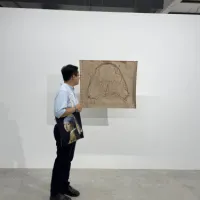One of the main issues of ASEAN Connectivity is about how to deal with cross-border diseases. Yet, albeit the Master Plan on ASEAN Connectivity was revised in 2015 (aka MPAC 2025) to tackle with multi-layers and complicated aspects, the cross-border diseases have not gained priority. ASEAN’s MPAC 2025 prioritises five areas of cooperation, including sustainable infrastructure, digital innovation, seamless logistics, regulatory excellence, and people mobility. However, none of these areas pays attention to the cross-border disease, not to mention epidemic or pandemic.
The Outbreak
The outbreak of COVID-19 has shaped the way we think of non-traditional security in Southeast Asia. Before COVID-19, the Association of Southeast Asian Nations (ASEAN) seemed to have less attention on cross-border disease. Nonetheless, since COVID-19 erupted, we have witnessed each country in Southeast Asia implemented different methods starting from the distribution of hand sanitisers, medical facial masks, the encouragement of physical distancing, to the lockdown policy in order to stop people mobilisation. Apart from that, we also have seen an influx of people who moved back from abroad to their home country or to home which might be located outside the capital.
The Complexity of Connectivity
Albeit people cross the border for different reasons, the economic intention seems to be the most common reason. Many people must cross the border to earn their livings every day. This involves custom procedures, transport, food, or even school and medical-related activities if they are sick or bring their children with them. These cross-border activities also play an important role in ASEAN regionalisation because many of them work in labour-intensive manufacturing, accordingly their mobilisations help ASEAN to develop and strengthen regional integration process. We, hence, should see people mobility as one of the regional economic integration processes because many of them contributed to regional productivity and competitiveness.
People also crossed the border because of the wish to keep their jobs as the lockdown policy might affect their cross-border routine commute, such as the Malays who commute to Singapore on a daily basis, or the Burmese who cross the border to Thailand to earn their living. Having said that, this reflects that there is complicated interconnectedness between non-traditional security, regional connectivity and economic aspect (e.g. uneven economic development, economic disparity).
This cross-border phenomenon is considered to be one of the vital ways the virus could transmit from one agent to another agent. With this thought, the border lockdown policy was implemented.
The Next MPAC?
ASEAN’s MAPC, however, as mentioned above, is not aware of how non-traditional security plays a role in regional connectivity. The based ideas of MPAC evolved around the market-oriented approach. So, the areas of cooperation focus on how to improve and facilitate connectivity by utilising economic mechanisms.
What should ASEAN’s MPAC prepare to tackle unexpected incident in the future?
First, it must start to aware that epidemic and pandemic is another non-traditional security that affects regional connectivity. This awareness must be seriously taken into account of the next MPAC.
Second, the next MPAC amendment should include non-traditional security as one area of cooperation. It should emphasise epidemic, pandemic, cybersecurity, drug trafficking, human trafficking etc. In other words, regional connectivity must be planned by integrating non-security perspective because physical and institutional linkages are interconnected. MPAC must broaden its scope from market-oriented to a more society-oriented approach.
Third, regional mechanisms on non-traditional security, particularly on epidemic and pandemic, must be initiated at the regional level. This includes flexible yet rigorous regional mechanisms on border control at the international airport, ports, international railway networks, and land customs when the epidemic and pandemic erupted. This would not be effectively implemented unless the awareness of the interconnectedness between regional connectivity and cross-border disease is appropriately aware of and pronounced at the regional level.
The next MPAC amendment could be supported by scholars and think tanks around the region. Political scientists whose expertise centred on traditional and non-traditional security must be engaged in the next MPAC amendment in order to identify challenges and threats that might come along with regional connectivity.
ASEAN needs to amend its MPAC as soon as possible. It should even rethink to amend the incumbent MPAC and issue a new MPAC even before 2025. Regional mechanisms must be rethought now.
Author: Narut CHAROENSRI is a lecturer in the Faculty of Political Science and Public Administration at Chiang Mai University, Thailand.



